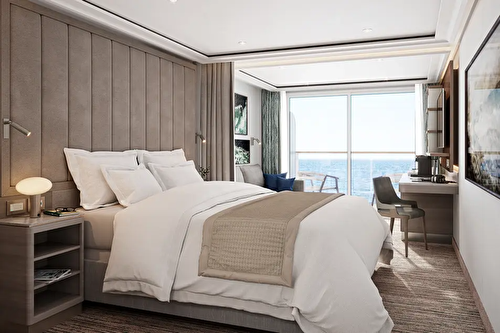Barcelona To Lisbon
- 18 Nov ‘26
- 10 nights
- Departing from Barcelona
- Silver Ray
-
Inside price fromCall for price
-
Outside price fromCall for price
-
Balcony price fromCall for price
-
Suite price from$14,000*/pp
YOUR ITINERARY
Barcelona, Spain - Valencia, Spain - Malaga, Spain - Malaga, Spain - Cadiz, Spain - Tangier - Casablanca, Morocco - Casablanca, Morocco - Lisbon


















The infinite variety of street life, the nooks and crannies ...
Valencia is Spain’s third largest city and capita...
Situated on Spain’s Costa del Sol, Malaga is th...
Situated on Spain’s Costa del Sol, Malaga i...
More than a hundred watchtowers gaze out across the waves sur...
Set on the Maghreb coast, Tangier is Africa’s outstretch...
Immortal lines from the silver screen may have imprinte...
Immortal lines from the silver screen may have imprin...
Lisbon, the capital of Portugal, is a city open to the...
YOUR SHIP - The Silver Ray
Silversea’s second Nova Class ship arrived in summer 2024 and promises guests seamless destination connection. Silver Ray mirrors every aspect of her sister ship, Silver Nova, including a pioneering, asymmetrical design and extraordinary use of glass in both public areas and in suite for uninterrupted views wherever you are! What’s more, Silver Ray is one of the most spacious ships ever built, offering an exceptionally high space-to-guest ratio yet remaining nimble enough to offer purity in movement, as her name suggests. She is truly a ray of light.
Description
Silversea’s second Nova Class ship arrived in summer 2024 and promises guests seamless destination connection. Silver Ray mirrors every aspect of her sister ship, Silver Nova, including a pioneering, asymmetrical design and extraordinary use of glass in both public areas and in suite for uninterrupted views wherever you are! What’s more, Silver Ray is one of the most spacious ships ever built, offering an exceptionally high space-to-guest ratio yet remaining nimble enough to offer purity in movement, as her name suggests. She is truly a ray of light.


